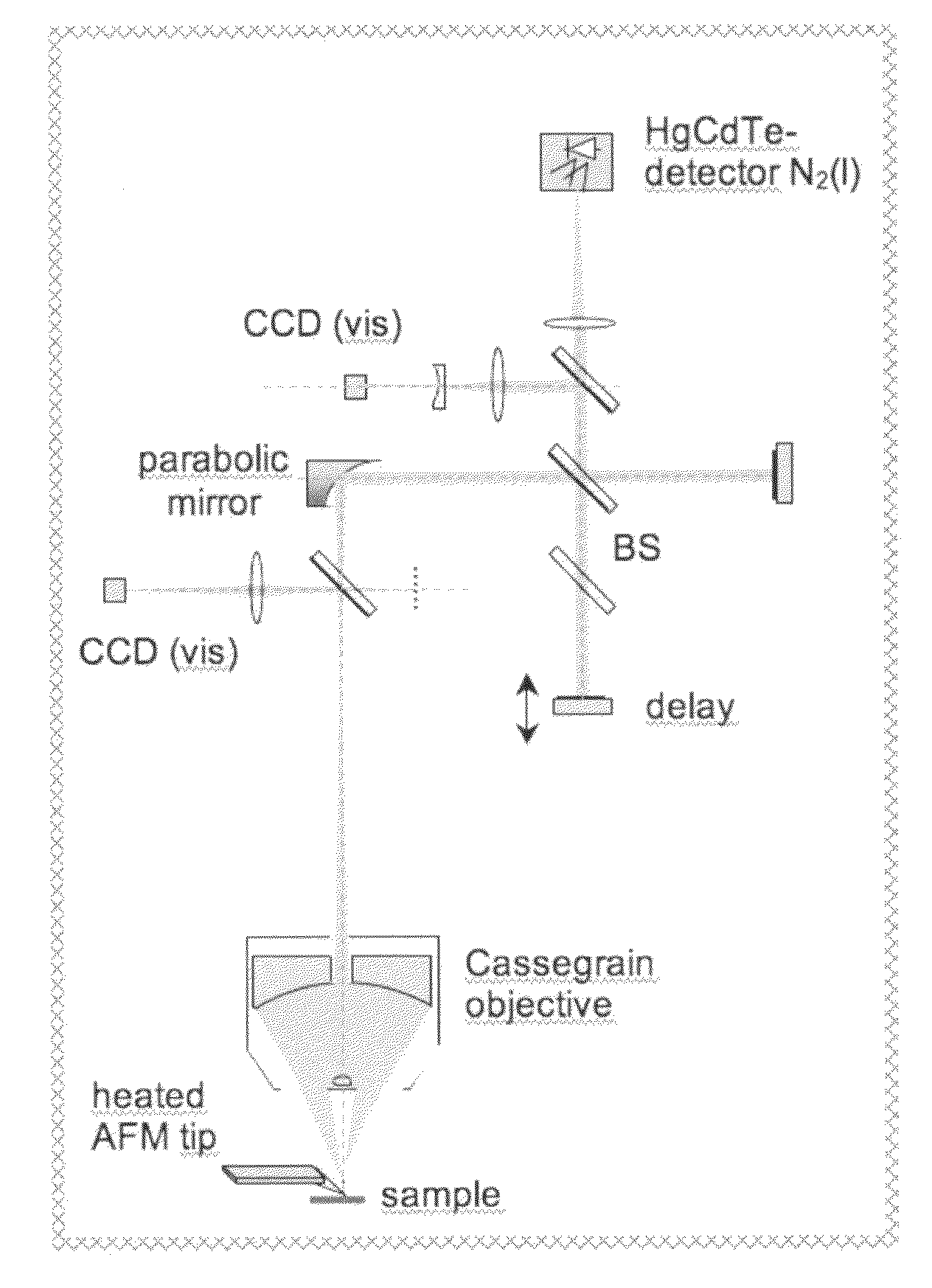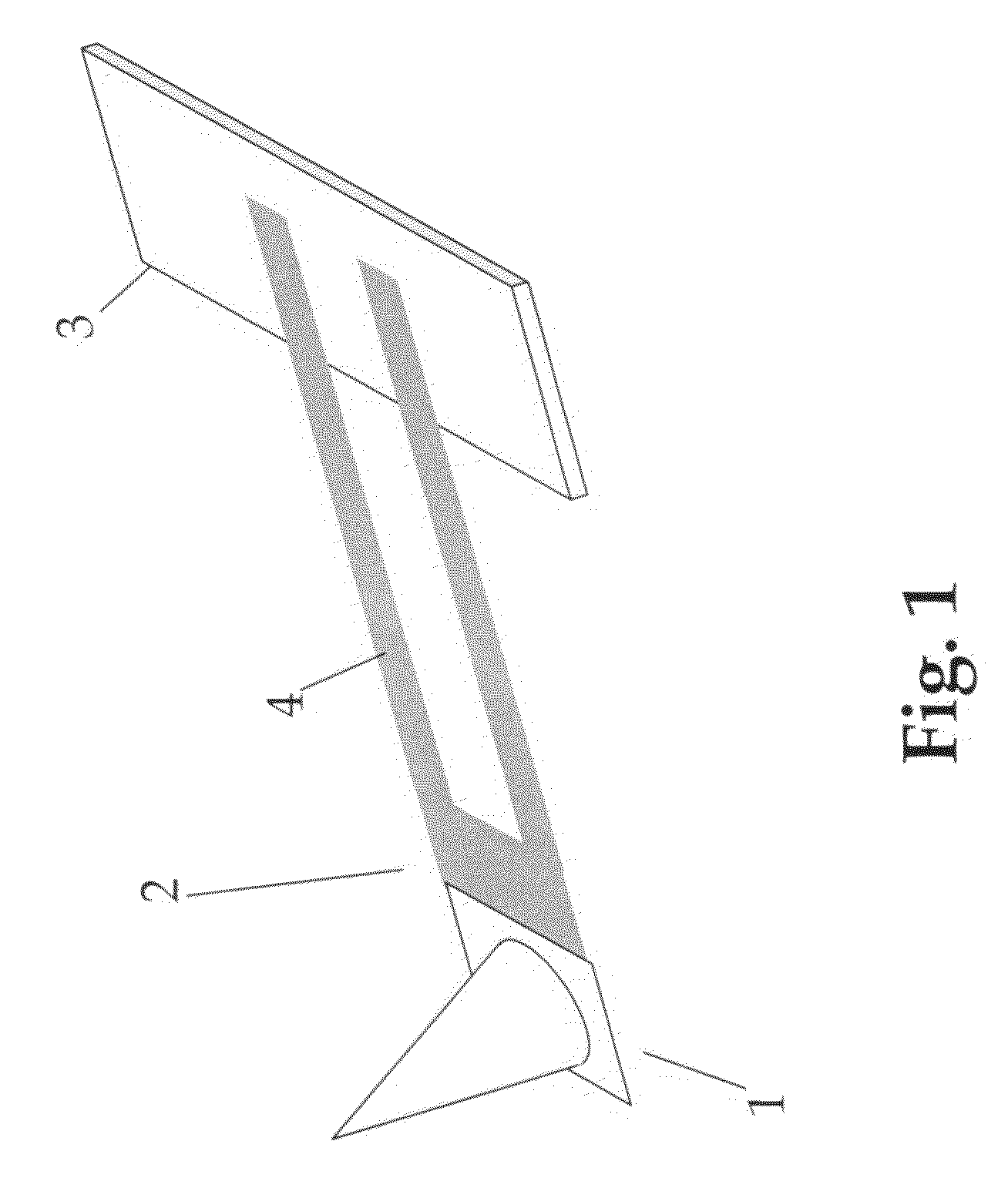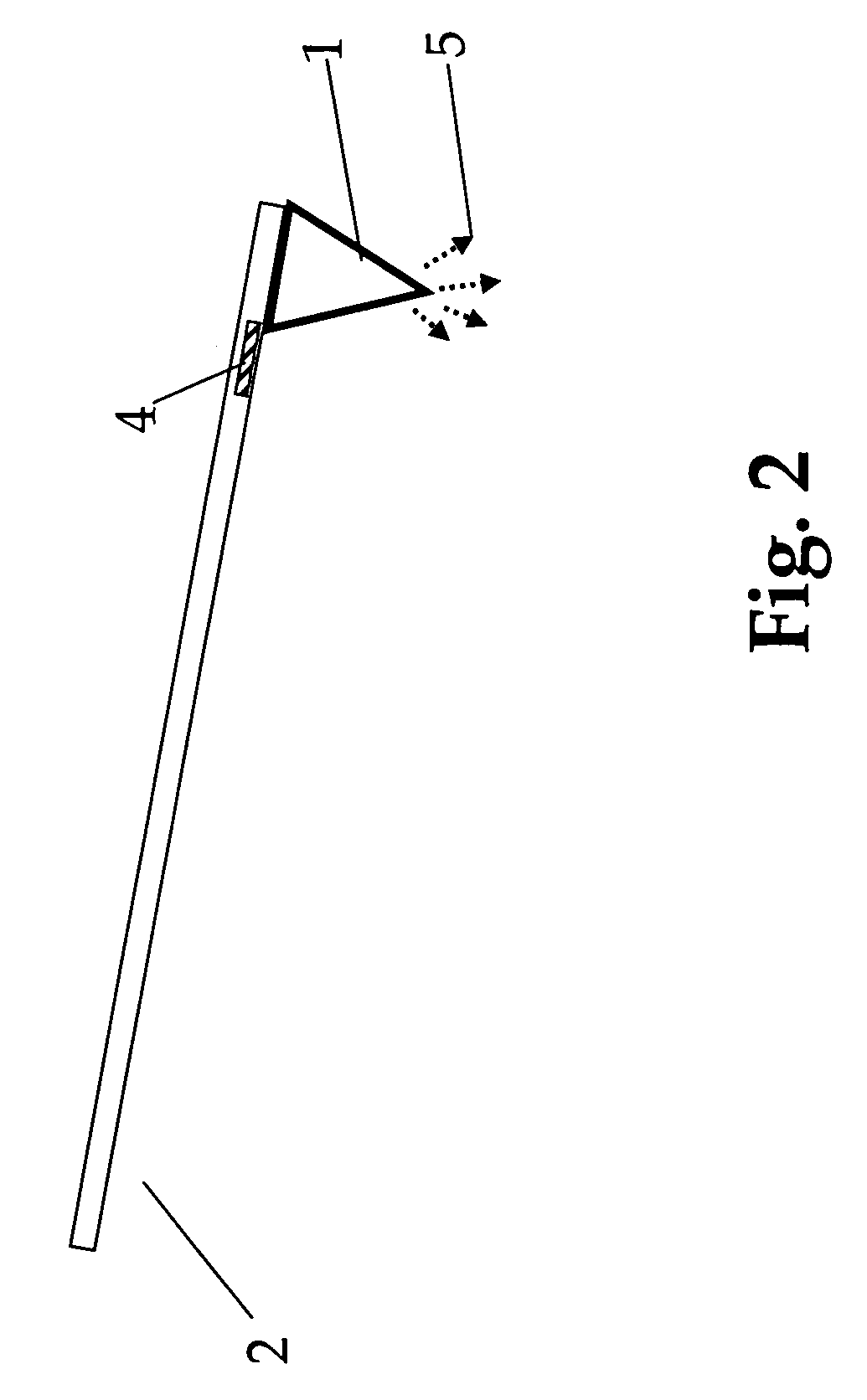Infrared imaging using thermal radiation from a scanning probe tip
a scanning probe and thermal radiation technology, applied in the field of optical nearfield scanning probe microscopy, can solve the problems of limited spatial resolution to the scale of many microns, limited optical diffraction in conventional optical spectroscopy and microscopy, and insufficient use of raman spectroscopy, etc., to achieve the effect of reducing the background signal of emitted radiation
- Summary
- Abstract
- Description
- Claims
- Application Information
AI Technical Summary
Benefits of technology
Problems solved by technology
Method used
Image
Examples
Embodiment Construction
Nanoscale Thermal Radiation Source
[0018]The invention is the use of thermal radiation from a heated scanning probe tip as a near-field source of radiation. The tip can be heated, e.g., electrically and / or optically to generate a local source of radiation that can interact with a region of a sample without requiring additional optics to focus and direct the radiation. As opposed to the use of external illumination by, e.g., a laser source, this provides high spectral bandwidth, saves the costs of an external light source, and is technologically easier to implement since only optics and alignment for far-field detection is required. In combination with spectrally resolved optical techniques (e.g., Fourier Transform spectroscopy) spectroscopic information with a simultaneous lateral optical image of the sample can be obtained.
[0019]In a particular embodiment, the heating of the probe tip can be accomplished conveniently with existing Nano thermal analysis (NanoTA) and / or Scanning Therm...
PUM
 Login to View More
Login to View More Abstract
Description
Claims
Application Information
 Login to View More
Login to View More - R&D
- Intellectual Property
- Life Sciences
- Materials
- Tech Scout
- Unparalleled Data Quality
- Higher Quality Content
- 60% Fewer Hallucinations
Browse by: Latest US Patents, China's latest patents, Technical Efficacy Thesaurus, Application Domain, Technology Topic, Popular Technical Reports.
© 2025 PatSnap. All rights reserved.Legal|Privacy policy|Modern Slavery Act Transparency Statement|Sitemap|About US| Contact US: help@patsnap.com



